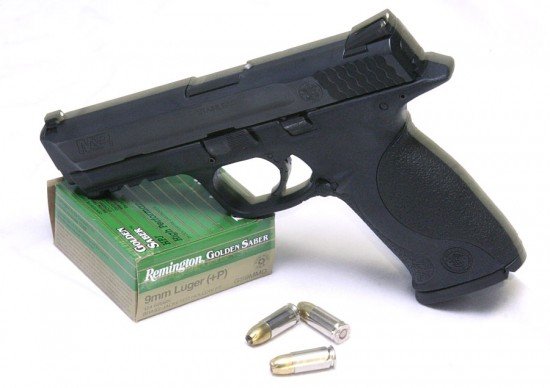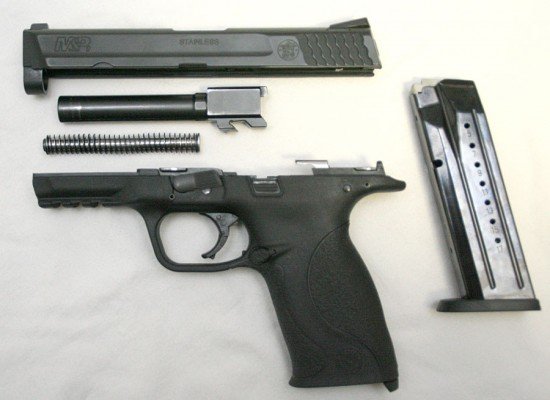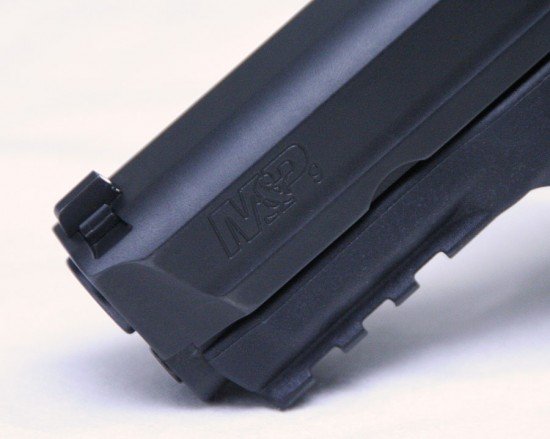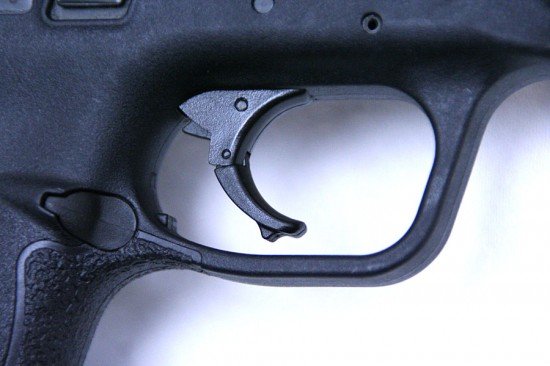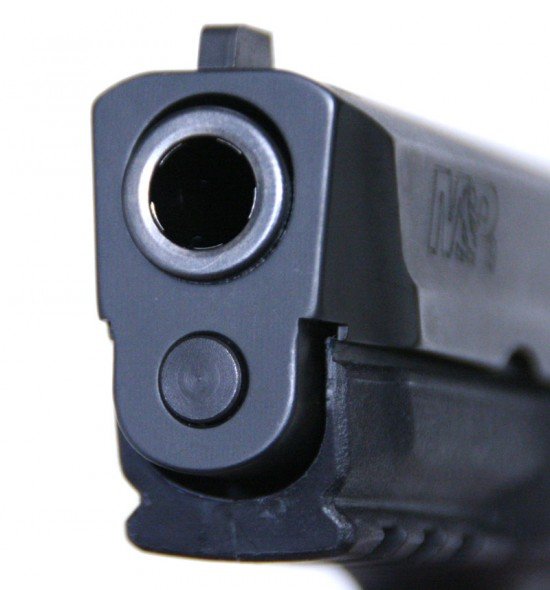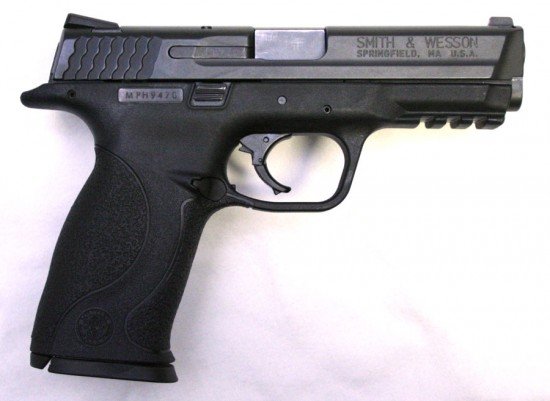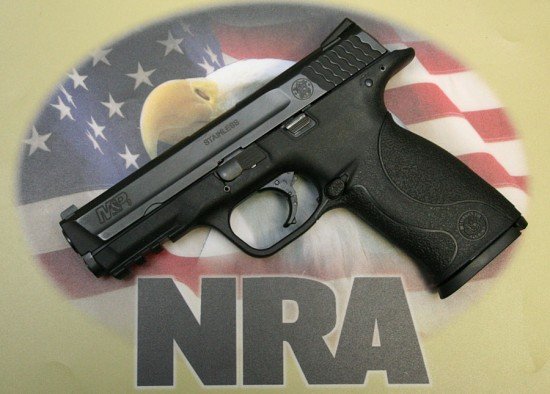This review of the Smith & Wesson M&P line of pistols is not your typical T&E report.
I’ve owned a M&P9 for several years, and I have been extremely impressed by its performance. It has been very reliable and incredibly accurate. But this review is more about the series of guns and their suitability to law enforcement use.
At one point, Smith & Wesson dominated the law enforcement market. More S&W revolvers rode with cops on patrol than any other manufacturer’s guns. When the big switch came to semi-automatic pistols, though, Smith & Wesson lost a large portion of its law enforcement market to companies like Glock and SIG SAUER.
In recent years, however, Smith & Wesson has staged an incredible comeback with the M&P line of pistols. Not only has the company shored up their relationships with diehard S&W departments, but they are even taking market share away from the Glock juggernaut.
The M&P, Generally
Like a lot of modern pistols, the M&P line is polymer-framed and striker-fired. These guns offer a number of benefits including ease of production (which leads to lower costs), lightweight and rugged reliability. Some of these features are described in detail a little later.
Here are several reasons why I believe the M&P line of handguns is the best choice for law enforcement agencies who insist on issuing a single firearm for all of their officers.
Interchangeable Palm Swell Grips
The M&P pistols come with three interchangeable palm swell grips. These grips, or backstraps, allow the shooter to adjust the gun to his or her hand, rather than trying to adjust the hand to the gun. We cannot shrink or grow our hands to match the size of the pistol, by Smith & Wesson has made it very simple to size the gun to the officer.
There are three sizes that come with each pistol: small, medium and large. From shopping the gun around at the department and range, I was surprised at how many people really like the small grip size. It was a close second in preference to the medium size grip.
The large palm swell grip is really hand-filling and was the least popular of the three sizes. For this grip to fit correctly, you really need big hands.
Why is gun fit so important anyway? Accuracy.
One of the most important fundamentals of shooting a pistol is trigger control. If you fail to press the trigger smoothly to the rear, you will throw your bullets off target. For cops this means you decrease the chances you will stop an attacker and increase the odds of hitting a bystander. Neither possibility is desirable.
If your pistol does not properly fit your hand, your trigger finger will not properly address or sit on the trigger face. This increases the likelihood that you will pull the trigger at an angle, shifting the point of fire, rather than pressing straight back. Straight back = staying on target.
If the handgun fits the officer’s hand, this will increase accuracy, which in turn inspires confidence. More confidence with the firearm will often lead officers to practice more on their own and to be more open to learning in structured training classes.
Noted law enforcement firearms trainer Dick Fairburn commented that when a department is looking to buy handguns, “… the number one criteria is a weapon’s suitability to the officer — hand size…” With the exception of reliability placing higher, I agree with Fairburn.
SouthPaw Friendly
In addition to making the M&P pistols fit the size of the hand, Smith & Wesson set up the guns to work the same no matter which hand was holding it. The slide stop/slide release is ambidextrous, meaning that the slide can be released from either side of the gun at any time.
The magazine release button is reversible. Normally, the button is on the left side of the gun for right-handed shooters. However, the button reverses and can be set up on the right side of the pistol for lefties.
Reversing the magazine release is incredibly simple and takes all of 15 seconds. There is a small post-like spring in the frame that you move out of the way. You swap the button around and replace the spring. That’s it.
Consistent Trigger Pull
The double-action/single-action (DA/SA) trigger pull was championed by Smith & Wesson in the early days of transitioning departments from revolvers to pistols. Unfortunately, the DA/SA-type trigger is difficult to learn and hasn’t proved to be any safer for officers or suspects than any other type of trigger system.
A single trigger type is much easier to teach officers, whether it is the single-action trigger of a Colt 1911 or the 6.5 pound, striker-fired trigger in the M&P pistols. Officers can train and concentrate on learning a single trigger feel rather than two trigger feels and the transition between them.
Additionally, the M&P doesn’t have a de-cocker to take a gun out of SA mode and return it to DA mode. It doesn’t need one. Eliminating de-cocking removes one more step in the process of returning a firearm to its holster in the extremely stressful conditions post-shooting.
While doing research on a firearms policy for work, I’ve come into some research that is very eye-opening. Without going into too much depth here, let me state that I am convinced that a DA/SA style of trigger is more difficult to train, and is ultimately a less accurate system for more officers to shoot. Conversely, a double-action-only (DAO) system or striker-fired system is much easier to train, and officers will be more accurate with their shots.
Excellent Reliability
My Smith & Wesson M&P9 has proven to be extremely reliable with a wide range of ammunition. Every hollowpoint round I have put through it has fed and fired perfectly.
I’ve talked to officers at a neighboring agency that now issues the M&P40. Those officers have nothing but praise for their new Smith & Wesson pistols.
One feature that really sets the M&P apart from some of its competitors is the internal stainless steel chassis that is molded into the polymer frame. Plastic guns flex, absorbing some of the felt recoil during shooting. Less felt recoil is good, but too much flex can introduce reliability problems.
Although never officially acknowledged by Glock, the third generation G22 pistols had significant reliability problems with certain types of ammunition. Speculation ran from recoil springs to magazine springs to frame flex. I’m not sure they ever nailed down what the exact problem was, but a number of agencies experienced problems with the guns – both on the range and on the street. Supposedly the problem was fixed in the Gen 4 models, but even they had voluntary spring recalls.
Smith & Wesson built the M&P line with the intention of chambering the pistols for the high-pressure .40 S&W and .357 SIG cartridges. Other manufacturers have merely adapted their 9mm frames to the higher pressure guns. The internal steel chassis is just one of the reliability enhancers that Smith built into these pistols.
Multiple Options
Walk into the Varsity, a famous burger joint in Atlanta, and you will be met with “Whadda ya have? Whadda ya have?” Hitting the Smith & Wesson catalog, you could be asked the same question as the options are many.
The M&P can be had in full size and compact versions. The most popular calibers are covered: 9mm, .40 S&W, .357 SIG and .45 ACP.
They got colors: black is standard, but dark earth brown and even pink options are available as well.
Night sights, ambidextrous thumb safeties and magazine disconnect safeties are all available options.
The most recent addition to the M&P line is the Shield pistol: a single stack subcompact handgun perfect for backup duties. The Shield uses a single stack magazine to enhance thinness and is available in 9mm and .40 S&W.
Another great option in the M&P line is the M&P22 pistol. The M&P22 is a full-size M&P style handgun chambered for the .22 LR. This makes for a perfect training gun: low recoil and low cost.
Budget Friendly
M&P pistols are definitely budget-friendly. Retail price on the base M&P9 runs only $569. I’ve seen the same gun sell for less than $500 through various retailers. A department buying guns in quantity is likely to get a substantial discount on the pistols.
Made in the USA
“Made in the USA” may or may not mean much to you individually, but for some agencies hit hard by the migration of jobs overseas, buying an imported gun may not be politically palatable. Fortunately, Smith & Wesson is a US-owned company who makes all but one of the M&P guns here in the states. (The M&P22 is made for S&W by Walther in Germany.)
Smith & Wesson is the only significant player in the law enforcement handgun community that is “all American.”
One additional benefit to the M&P line is the Shield. The S&W Shield is a single stack version of the M&P pistols that is chambered in 9mm and .40 S&W. For an officer needing a backup or off-duty carry pistol, the Shield is an excellent choice!
